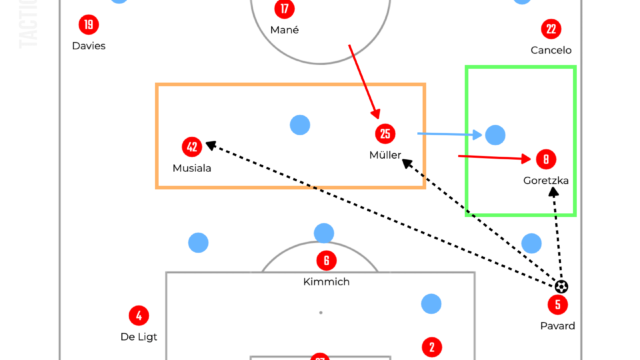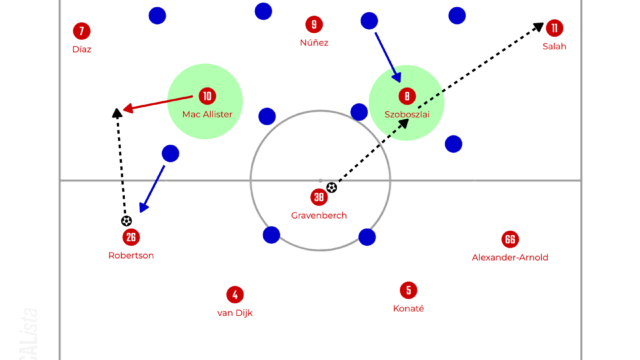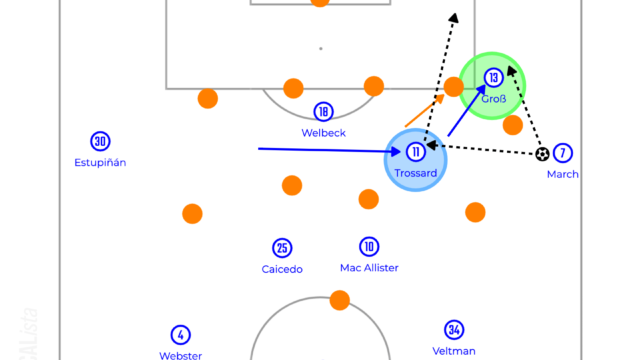How to Beat Liverpool? [Arne Slot’s Liverpool Tactical Analysis 25-26]
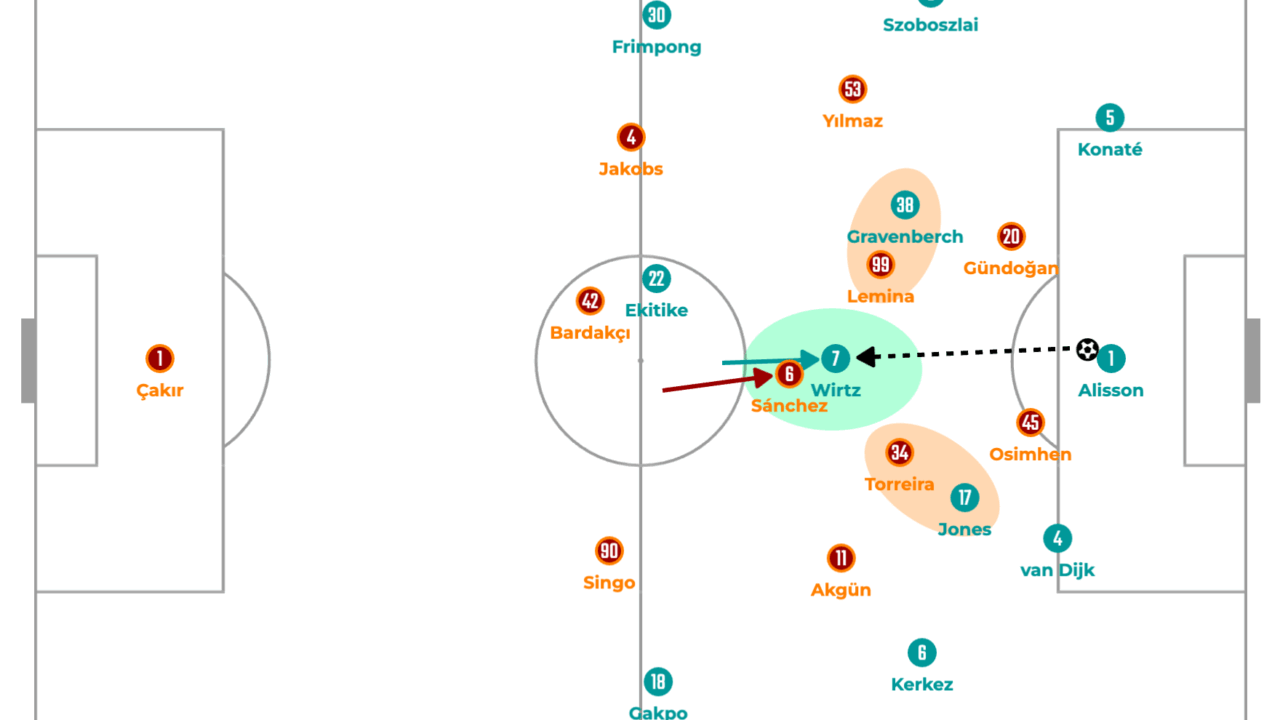
Introduction
Within the period of nine days, from 27th September to 5th October, Liverpool, the reigning champions, had lost three games in a row. This season, Liverpool had won games by goals scored in the last minutes, but this time, Crystal Palace and Chelsea scored the winner in the added time against them.
These three games away from home showed some challenges they are facing now. Some of them might be the negative effect of the dramatic changes in the squad and the others might be due to poor performance of some players compared with the previous season.
In this article, Liverpool’s tactical struggles are going to be analysed in five chapters and from the opposition point of view, how to beat current Liverpool is also going to be discussed as a counter strategy.
Here’s the tactical analysis of Liverpool this season, which was analysed based on their preseason games and written just before the season began.
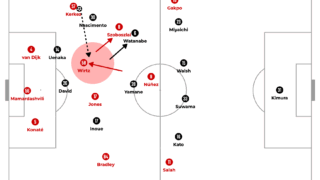
This can help you to understand how I saw Liverpool before the recent three defeats. Please enjoy.
Poor Resistance to Pressing
The first thing and probably the main thing that Liverpool are struggling now is build-up play against the opposition high pressing. Especially against Galatasaray, they couldn’t cope with man-to-man pressing in the midfield.

Like the illustration above, Galatasaray’s defensive midfielders matched up against Gravenberch and Curtis Jones to block the route to play through the midfield. This forced Liverpool’s midfielders some errors and the biggest one was that Gravenberch lost the ball by the pressure from Torreira after receiving it from Alisson and then he pulled down the opponent at the edge of the box in the added time in the first half.
This shows the importance of pressing-resistance, which means the individual quality of technique, skill or physicality to play under direct pressure. As many teams try to press man-to-man frequently, this quality becomes more important, but the profile of Liverpool’s midfielders are more physical rather than skill on the ball under pressure.
One solution would be creating overloads against a man-to-man setup and this is something we expect from Wirtz. The example below shows how he can offer an extra option to play though the opposition pressure.

Wirtz dropping into the midfield can work extremely well especially when the opponent marks both Liverpool’s defensive midfielders. As their focus is only on Liverpool’s defensive midfielders, it is difficult for them to mark Wirtz moving across the midfield line.
However, what if the opposition centre back follows him with accepting the risk to leave the back line? This is what happened in the game against Galatasaray.

As both Galatasaray’s defensive midfielders were close to Gravenberch and Jones, there was a pocket of space between them, where Wirtz tried to receive the ball. This time, however, Sánchez followed him to make it difficult for Wirtz to play comfortably.
What we’ve seen in this chapter was that Liverpool have an issue when playing out from the back against the opposition’s high pressing, which applies tight pressure on especially Liverpool’s defensive midfielders. The main topic was the poor pressing-resistance of their defensive midfielders, but Konaté and Van Dijk are also not good at playing effective passes or drives from the back and they’ve also made some cheap errors, resulting in wasteful turnovers of the possession.
Therefore, from the opposition point of view, it is extremely important to press on their defensive midfielders and also make sure that one of the centre backs is ready to follow Wirtz when he drops or moves across the lanes.
Against this kind of man-to-man pressing, it is effective to play over to exploit 1v1s up front and this has been one of Liverpool’s strengths. Do they still have that?
Long Balls and Second Balls
Yes, Liverpool still have this. They can play long to one of the attackers to flick it in behind or hold it up, then they play fast breaks to exploit the 1v1s up front.

Like the illustration above, they often target Gakpo, Salah, Ekitike or Isak up front and try to play over the opposition’s high pressing. These attackers are extremely good at holding it up or winning aerial duels, so it is a risk for the opposition teams to leave 1v1s at the back.
However, this hugely relies on individual performance rather than the systems. In other words, “who plays there” is more important.
Compared to the previous season or early this season, Arne Slot cannot fix the wingers these days. Salah, Gakpo or Díaz were always there last season. They all have great physical profiles. However, recently he needs to play Wirtz or Frimpong on the wings. How can they hold it up like Salah or Gakpo?
Another factor is where Szoboszlai plays. His versatile ability to play everywhere is exceptional, so Slot has played him in the right fullback position due to injury issues, but this also has a negative effect when playing long.
He cannot be a target player, but he is a great second ball winner. Last season, he was an attacking midfielder and close to the three attackers, so it was easy for him to win the second balls. Even when he plays as a defensive midfielder, as soon as a long ball is played over his head, he sprints towards the point where the second ball is likely to drop and collects it to begin the fast breaks. But when he needs to play as a right fullback, it becomes harder.
Additionally, the new number 10, Wirtz often drops deeper so he is often far away from where the second balls drop. This can be another factor that their long ball strategy hasn’t worked as much as it did last season.
However, they still have the pace. Even against Galatasaray when Frimpong played as the right winger, his pace was dangerous to exploit the space in behind. So if a long ball is played over the opposition back line and it becomes a sprinting battle rather than an aerial duel, he has an advantage.
So overall, Liverpool became less dangerous when playing long, still dangerous though. The main reason behind it is the difference of the attackers up front. Mamardashvili’s distribution can be a topic, but Alisson was there against Crystal Palace and Galatasaray.
From the opposition’s perspective, they still need to be careful of Liverpool’s long ball strategy, but in terms of the relationship between risks and rewards, compared with the previous season, for the opposition teams, the rewards are bigger. So, press high!
Lack of Threats from Wide Areas
This relates to the previous topic. The difference of the wingers really matters.
From last season, Slot’s Liverpool broke down the low defensive blocks with the wide triangles, and the most important part of it has been the wingers. The opposite-footed wingers consistently show the opposition fullbacks two options, cutting inside or using someone overlapping or underlapping the winger on the ball, then other attackers in the middle make runs to meet an in-swing cross.
Have a look at two examples from the Champions League game against Atletico Madrid.
This is the combination to earn the freekick which resulted in the opener.

Salah was on the ball and Frimpong made an underlapping run to drag the opposition defensive midfielder out of his position, then Salah combined with Wirtz and Gravenberch received in the space in front of the opposition back line.
Another example was their second goal.

Again, Salah was in possession and this time Frimpong made an overlapping run. This also made it difficult for the opponents to defend as they faced two possible options. Salah decided to go inside and played a one-two with Gravenberch to penetrate into the box to score.
These are the examples of how they break down the opposition defensive block, but the key is the wingers. However, as Frimpong or Wirtz needed to play as a winger, it became difficult to repeat them.
As a result, Liverpool has struggled to penetrate into the opposition box and only delivered crosses from outside the box. This is often regarded as low-probability attacks, but that’s not the case for Liverpool.
Especially towards the end of the game, with the substitutions, they put more bodies inside the box and their standard of reaction to the second balls inside the box is extremely high. Both goals against Chelsea and Crystal Palace and more other goals this season were scored from winning the rebound inside the box after crosses were initially deflected or cleared.
So, for the opposition, keeping the concentration on until the final whistle is blown to fill the box to avoid any available spaces for Liverpool’s attackers is extremely important, although this is the most difficult part in football.
Yes, it is true that Liverpool can find a goal at the end, but it is also true that they cannot find it until the last minute. So, let’s get two or more goals before the game goes into the extra minutes. That’s how to beat them. Haha.
Fragile in Counterattacks
This topic has been discussed by many people so let’s keep it simple. Liverpool has conceded many counterattacks which resulted in goals or clear-cut opportunities. I think there’re two reasons behind it.
The first one is the flip side of their aggressive attacking style. As they allow many players including the defensive midfielders or fullbacks to go forwards, they simply leave huge space with less players to cover.
As it was discussed in the previous chapter, their main threat came from rotations in the flanks, which involve the fullbacks to overlap or underlap or the defensive midfielders to pop up in the space in the middle. If they can finish the attack with an outcome, no problem. But if they lose the ball in the middle, it turns into a dangerous opposition counterattack.

This is the example of a goal conceded from the opposition counterattack in the game against AC Milan in the preseason game. They lost the ball in the middle and some midfielders or fullbacks were out of their positions and Milan played a quick counterattack to score this goal.
Another reason for their rest defense issue relates to the tempo of the game.
Liverpool since Jürgen Klopp took over have been described as extreme aggressive and attacking style. Even though Arne Slot slightly brought possession style to occasionally slow down the game, their spirit to attack quickly with fast breaks is still there.
If you go faster, it’s difficult to play as a team. When attackers sprint towards the opposition goal, is it realistic to expect for the rest players such as centre backs to sprint at the same speed to push the lines up to organise themselves? No. It’s the same for the opposition. The defenders will need to sprint back to defend the fast break, but other attackers would remain high in many cases.
So, what happens if they lose the ball is the chaos at the back. Liverpool’s defenders aren’t organised and the opposition attackers stay high. This is not an ideal rest defense.
This is similar to their long ball strategy. There’re risks and rewards and as Salah or Gakpo still can’t find their best form yet and there’re no alternatives for them, the probability of Liverpool scoring a goal from their fast breaks is lower than the probability of the opponents scoring a goal (although it’s not sure as I haven’t checked the data, but I feel like that, haha).
For the opponents, of course the priority is to defend the fast breaks, but the attackers remaining high need to be ready for exploiting Liverpool’s poor rest defense. This can be a great opportunity. Quickly play through and get in behind.
Exploiting the Space behind Salah
Now, let’s talk about Liverpool’s defense. In recent games, Arne Slot tailored their pressing organisation to the opposition shape, but there’re consistent considerations. Keeping Salah high and +1 at the back.
When pressing high to even apply pressure on the opposition goalkeeper, the first man to press is the striker. Ekitike or Isak makes a curved run to show the opposition goalkeeper one side.
Then, the right winger, Salah, keeps his eyes on the opposition left centre back to press him when he receives the ball. And when they do this, thanks to the striker limiting the direction of play to leave the furthest opponent, they can maintain +1 at the back. The illustration below shows their pressing organisation against Crystal Palace.

However, as Salah is high, there’s space behind him, and Chelsea showed how to exploit there.
Salah knows there’s a man behind him, so he presses the opposition centre back with screening the passing lane to the fullback. Against this, Chelsea utilised the third man combination well.

This space can be defended by two players. Bradley or Gravenberch. Initially, Gravenberch tried to jump to Cucurella while the pass was on the way to him, but especially when Enzo Fernandez dropped to receive the ball and play to Cucurella, he couldn’t jump to Cucurella as he needed to follow Enzo to drop back. And also this was just too demanding for him to cover the whole space behind Salah even with his great ability to cover huge space.
Another solution is getting Bradley to step higher. This is the one Slot decided to do during the game following the first goal conceded.
When Chelsea were to restart the game by a goal kick, Bradley stepped up between Cucurella and Garnacho to press on Cucurella as quickly as possible.

This solution was implemented just after they were down to 1-0 when they needed to be more front footed. So basically this is not the first option for Slot.
This +1 principle is the same in the midfield. Here’s the setup against Crystal Palace.

As Wirtz played as the left winger, he tucked inside when defending in the midfield to make it man-to-man in the midfield. And the back line kept the +1, meaning there was an underload up front. Therefore, Crystal Palace could generate time to possess the ball in the midfield and the spare centre back could comfortably play in behind.

Another example would be the first goal conceded against Chelsea. This time, Soboszlai was in the front line with Isak. At the same time, both defensive midfielders were pinned by Chelsea’s attacking midfielders. So, Caicedo was completely free here.

Accepting the underload up front to keep the spare centre back at the last line isn’t a bad idea. But to do this, the midfielders and attackers need to work collectively to cover the underload.
The space in Salah’s behind was targeted in the final third as well. Chelsea kept penetrating into the box from their left side and the winner came from there. So Liverpool’s right side is an obvious weakness and would be attacked more and more in the future.
And this has been also discussed throughout this article, in terms of risks and rewards, Salah staying high generated more rewards in the past, but now the rewards are less.
Like the illustration below, if Liverpool win the ball back and Salah is in the high position, he can be the first attacker in the fast breaks. But if he can’t generate goals from this, only risks will remain.

So overall, not only about Liverpool but in general, there’re risks and rewards. Last season, Liverpool were rewarded a lot, but this season, the risks appeared more. So no need to be afraid, let’s hope Liverpool don’t overperform and exploit the risks they accepted.
